Respiration by microorganisms in suspension
Respiration by microorganisms in suspension
Thu, Oct 09 2025
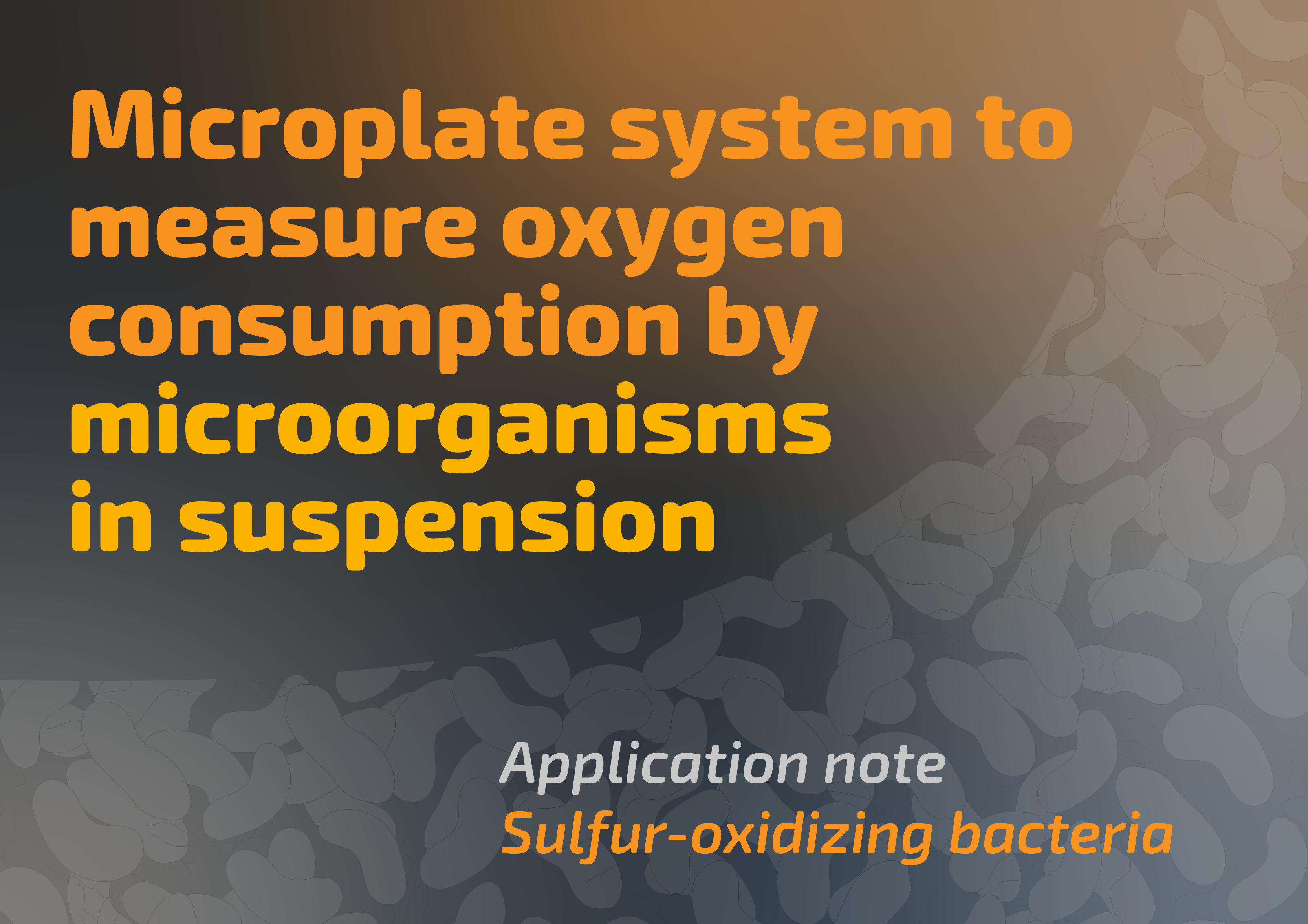
The microplate respirometry system already have a long and well proven track record for providing high throughput oxygen consumption measurements in a range of different small organisms (e.g., Daphnia, Zebrafish embryos, marine invertebrate larvae, etc.).
In this application note, we demonstrate how the microplate system can also be applied for high throughput respiration measurements of microorganisms in suspension, here in corrosion samples dominated by the bacterium Acidithiobacillus thiooxidans.
Sulfide oxidation by A. thiooxidans at low pH can lead to the production of sulfuric acid, which is very problematic for concrete corrosion.
H2S+ 2O2 → H2SO4 (sulfuric acid)
As the sulfide oxidation is driven by an O2 reduction and consumption, this process can be investigated by following the change in O2 over time with the use of the microplate respirometry system.
The aim in this setup and demonstration was to investigate the inhibitory effect of nitrite on this sulfide oxidation under low pH (~ 2) in samples of concrete corrosion materials, using the microplate respirometry system.
Approach
Corroded concrete material, softened and structurally deteriorated as they have been exposed to microbial induced corrosion (expected to be dominated by A. thiooxidans), was mixed with water, sulfuric acid, sulfide and with different concentrations of nitrite (NaNO2). The samples were vortexed to mix and aerate the samples before being distributed across the glass microplate with 1,700 µL wells. To support continuous agitation, one glass bead was included in each well before the wells were filled with sample solution and sealed, and the plate and reader were placed on an orbital rotating shaker table.
After this, the change in the oxygen saturation in the 24 wells (with different nitrite concentrations) was monitored and logged using the MicroResp software. Below is an image of the results/output in the MicroResp software. The first column is the control wells (no nitrite added), and each of the subsequent columns are wells with increasing nitrite concentrations. The unit mg/L refers to mg NO2--N / L, which represents the concentration of the added nitrogen (N) in the form of nitrite (NO2-) in the samples.
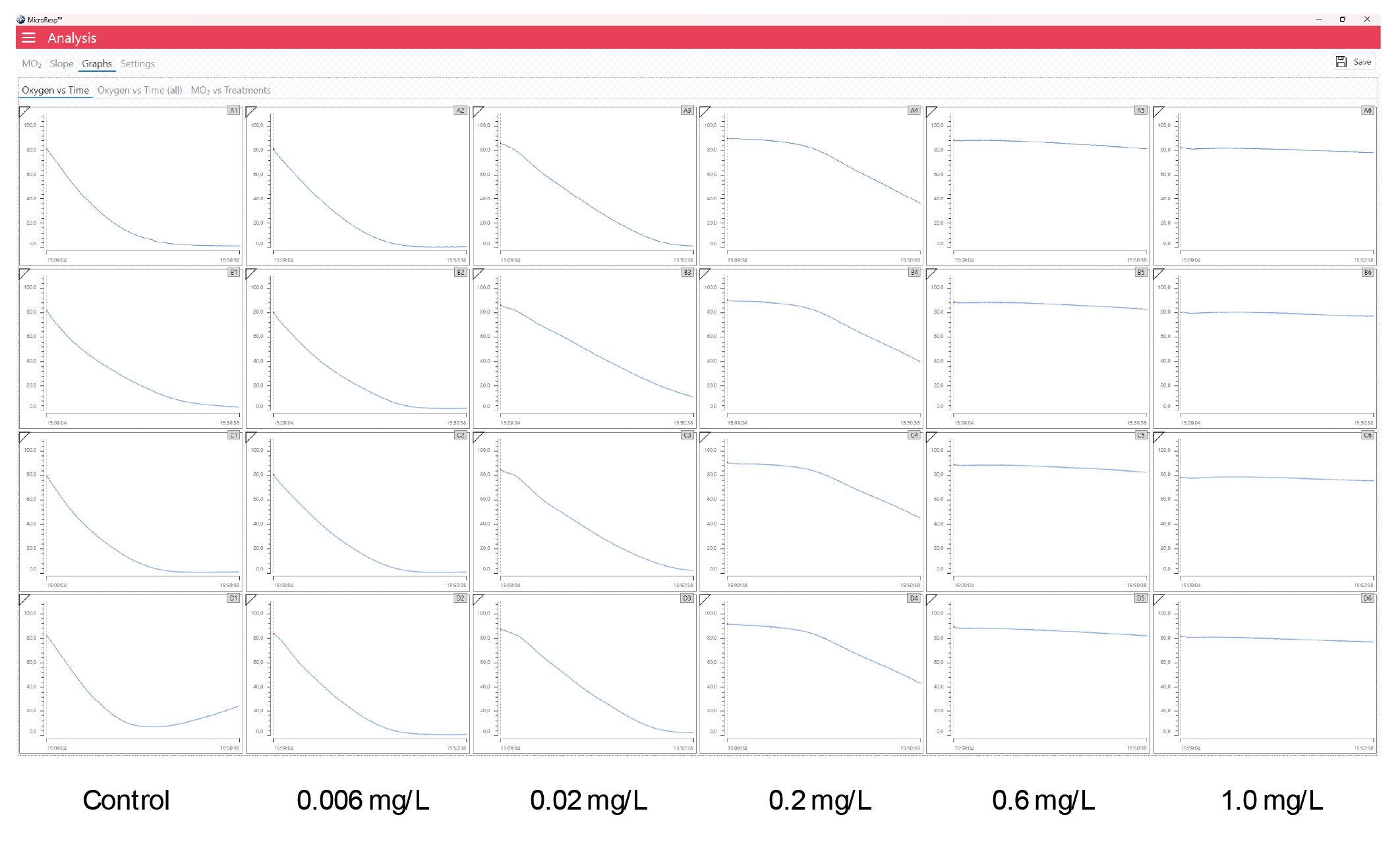
These results clearly show that O2 consumption decreased with increasing nitrite concentration. In control wells and wells with lower nitrite concentrations, most O2 was consumed within one hour. For the highest nitrite concentrations, only limited O2 was consumed within one hour. These results demonstrate an inhibitory effect of increasing nitrite concentration on microbial oxygen consumption, and thus, that this microbial activity could be evaluated using the microplate system.
Based on the MicroResp data output, a figure like this can be created:
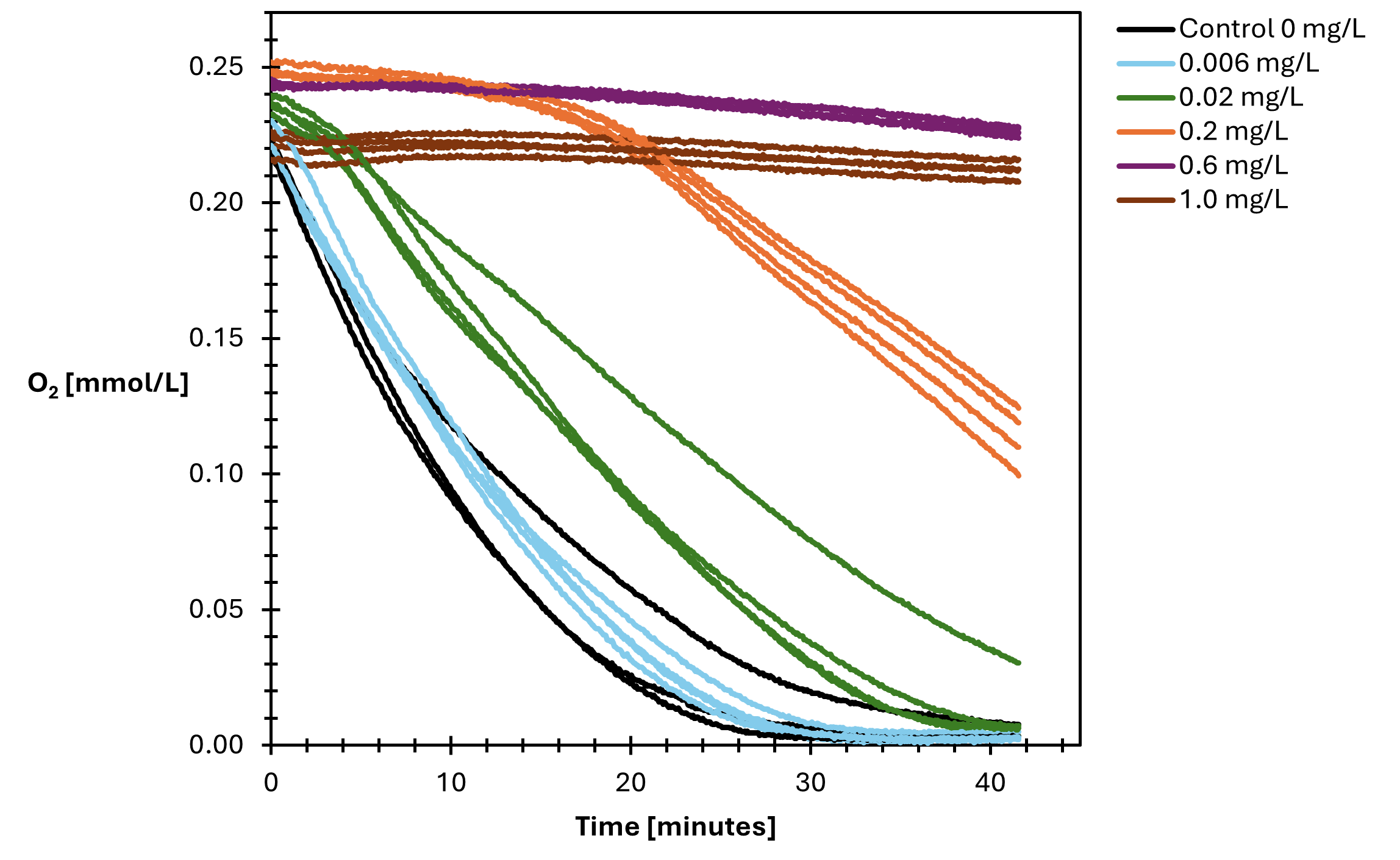
Figure created based on the MicroResp analysis software output. Well D1
excluded due to a trapped air bubble reoxygenating the sample.
This data output could be used to create dose response curves, here based on the first 30 minutes of monitored oxygen consumption:
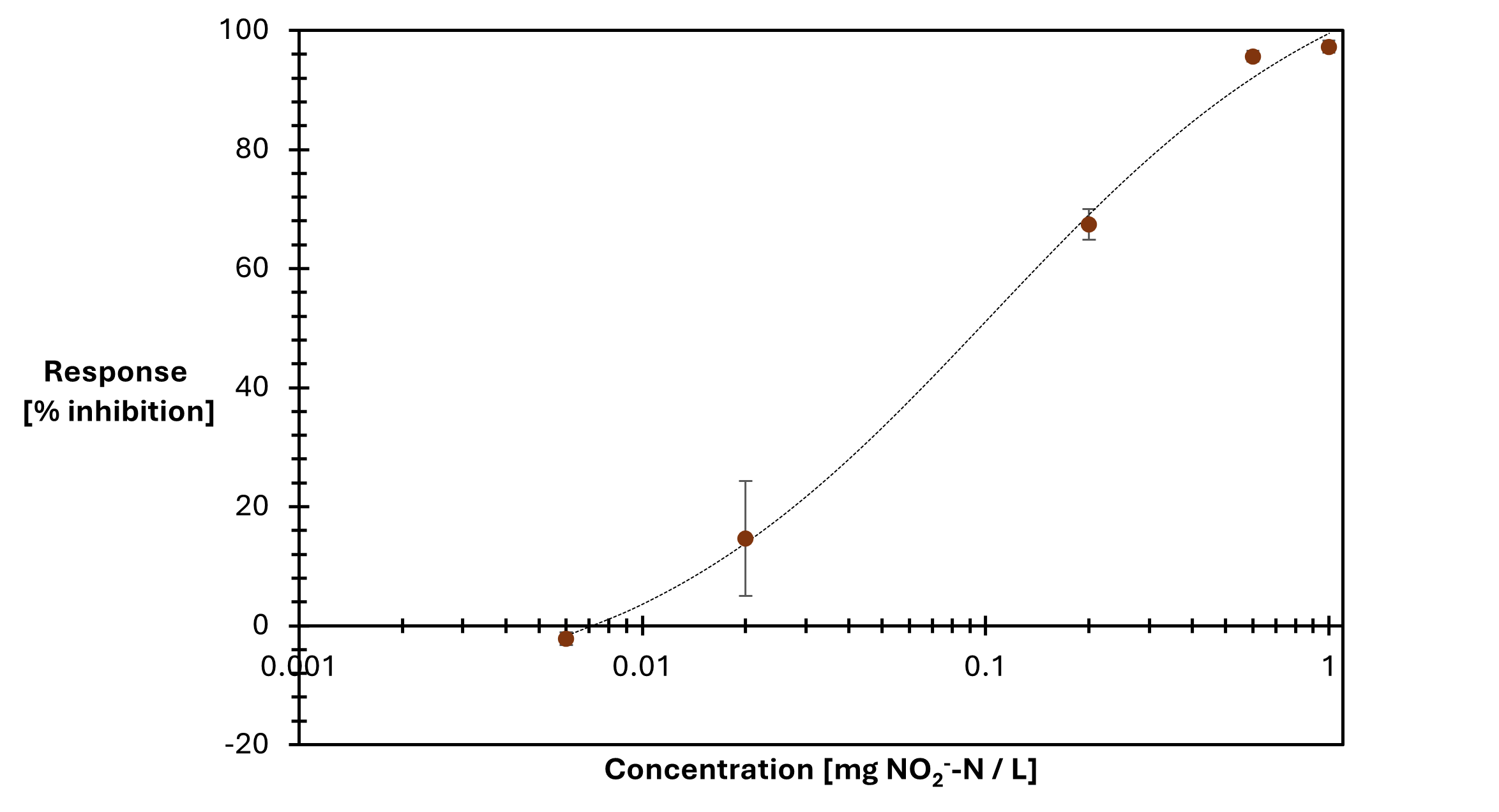
Inhibition of oxygen consumption compared to controls (without added nitrite) at increasing
nitrite concentration after the first 30 minutes. Values are average of the four replicates ± 1 SD.
The microplate system was also used to investigate microbial oxygen consumption over a longer time frame, here for about 6 hours:
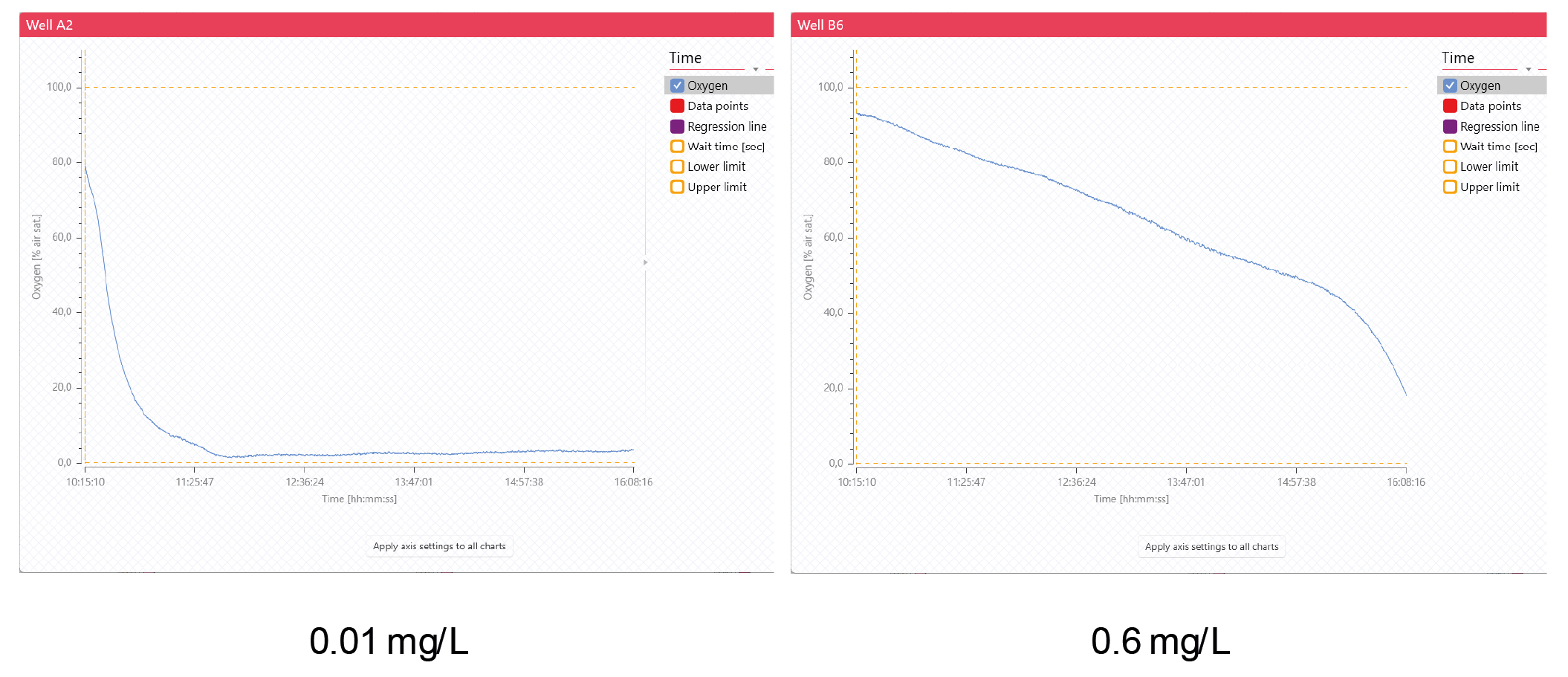
These experiments were carried out as a part of the master’s thesis work by Sune Popp Hinke and Line Gade Frahm together with Associate Professor Asbjørn Haaning Nielsen at the Department of the Built Environment, Aalborg University. A big thanks to all for testing our system to monitor microbial oxygen consumption.
Further insights on the project and challenges associated with acid formation, by Professor Asbjørn Haaning Nielsen:
This application note demonstrates how a microplate-based respirometry system can be used for high-throughput measurements of microbial respiration in concrete samples undergoing biogenic sulfuric acid (BSA) attack. Such environments are typically colonized by the acidophilic, sulfur-oxidizing bacterium Acidithiobacillus thiooxidans, a key driver of BSA.
At the low pH characteristic of BSA-affected concrete surfaces, A. thiooxidans oxidizes hydrogen sulfide (H₂S) to sulfuric acid (H₂SO₄):
H2S+2 O2 → H2SO4
The acid aggressively dissolves the calcium-rich cement matrix, forming gypsum and ettringite whose expansion leads to cracking and loss of structural integrity. The microplate system enables rapid, parallel monitoring of oxygen consumption, providing high-resolution insight into sulfur-oxidizing activity directly in BSA-affected concrete. In the present study, we examine how nitrite inhibits the BSA process by reducing the sulfur-oxidizing activity of A. thiooxidans and thereby slowing sulfuric acid generation.
If you too are interested in the microplate respirometry system for oxygen consumption rate measurements in suspensions of bacteria, algae, yeast, protozoa etc., please reach out to our product specialist Dr Louise Vinther Grøn (lvg@loligosystems.com), who will be happy to discuss your experimental needs and considerations.
We are looking forward to seeing even more studies on microbial oxygen consumption with the use of the MicroResp system in the future.